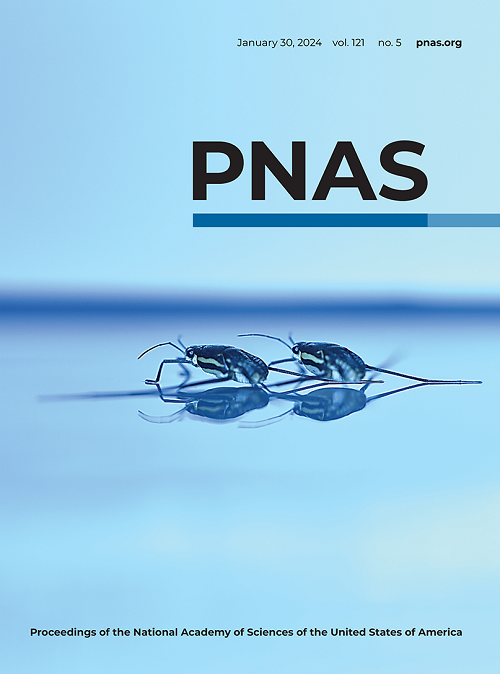Calcineurin controls the cytokinesis machinery during thermal stress in Cryptococcus deneoformans
IF 9.4
1区 综合性期刊
Q1 MULTIDISCIPLINARY SCIENCES
Proceedings of the National Academy of Sciences of the United States of America
Pub Date : 2025-05-21
DOI:10.1073/pnas.2503751122
引用次数: 0
Abstract
Calcineurin is a highly conserved phosphatase that plays a central role in sensing calcium and governing transcriptional, posttranscriptional, and posttranslational signaling networks. Calcineurin is a heterodimer consisting of a catalytic A subunit and a regulatory B subunit. Through downstream effectors, calcineurin signaling drives myriad responses in different organisms. In the fungal pathogenic钙调磷酸酶控制变形隐球菌在热胁迫下的细胞分裂机制
钙调磷酸酶是一种高度保守的磷酸酶,在感知钙和调控转录、转录后和翻译后信号网络中起着核心作用。钙调磷酸酶是由催化a亚基和调节B亚基组成的异二聚体。通过下游效应器,钙调磷酸酶信号在不同的生物体中驱动无数的反应。在感染人类的真菌致病性隐球菌物种复合体中,钙调磷酸酶控制着耐热性,是高温生长和发病所必需的。在变形隐球菌中,这一关键信号级联的潜在分子功能尚不清楚。在这项研究中,我们进行了遗传筛选,并确定了在高温生长过程中抑制钙调磷酸酶需求的遗传变化。我们的结果确定了两种绕过钙调磷酸酶功能需求的机制。第一种机制涉及片段性非整倍体,通过扩增和染色体片段的丢失。第二种机制涉及编码三种蛋白质(Chs6、Imp2和Cts1)的基因的显性氨基酸取代突变,这三种蛋白质是酿酒酵母分离和出芽所需的进入进展复合体组分的同源物。钙调磷酸酶活性的丧失会导致几丁质和壳聚糖的积累和严重的出芽缺陷,而在钙调磷酸酶缺乏的情况下,抑制性突变在很大程度上恢复生长和细胞分裂。这些发现表明,钙调磷酸酶信号级联控制着热胁迫下有丝分裂出口网络中保守的细胞分裂机制。
本文章由计算机程序翻译,如有差异,请以英文原文为准。
求助全文
约1分钟内获得全文
求助全文
来源期刊
CiteScore
19.00
自引率
0.90%
发文量
3575
审稿时长
2.5 months
期刊介绍:
The Proceedings of the National Academy of Sciences (PNAS), a peer-reviewed journal of the National Academy of Sciences (NAS), serves as an authoritative source for high-impact, original research across the biological, physical, and social sciences. With a global scope, the journal welcomes submissions from researchers worldwide, making it an inclusive platform for advancing scientific knowledge.

 求助内容:
求助内容: 应助结果提醒方式:
应助结果提醒方式:


